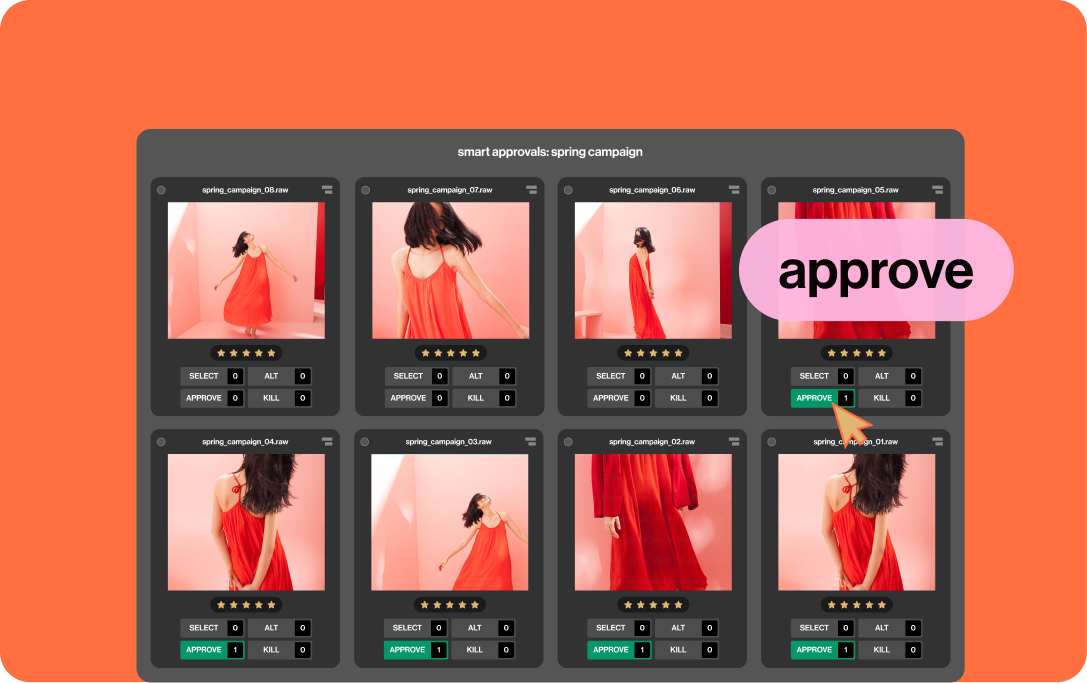What is Brand Asset Management and Why is it Important?

Brand Asset Management (BAM) is a process of organizing and sharing branded content—such as logos, graphics, images, and videos—in an efficient, methodical way. It involves setting guidelines for how to use these assets and making sure that they remain consistent across all channels.
Why Brand Asset Management is Essential
BAM builds brand loyalty by ensuring that all branded content is used and distributed correctly and consistently. It helps businesses maintain a unified brand identity and makes it easy to leverage existing assets across multiple channels.
A brand’s assets are what make it unique. With a well-managed repository to house these assets, your creative team can consistently bring that brand to life in every piece of content that they create and that your marketing team distributes, reinforcing that brand identity each time.
The only way to achieve this is through competent BAM—let’s unpack it.
The Downside of Traditional BAM
Traditional methods of managing brand assets can be chaotic and inefficient, leading to delays in getting content out to market. These outdated methods also often limit the extent to which the assets can be fully leveraged throughout an organization. As a result, brands suffer from inconsistent messages, wasted resources, and a drain in efficiency.
Control and Compliance With Modern BAM
Modern BAM ensures that businesses use the right images, logos, and other brand elements correctly, protect their brand identity and ensuring compliance with laws or regulations. It involves creating guidelines for how the company’s assets can be used, tracking how they are accessed, and providing training on proper usage.
That’s where Digital Asset Management (DAM) comes in.
The Role of DAM in BAM
Digital Asset Management (DAM) solutions are integral to modern BAM. DAM allows users to customize their content based on usage scenarios like size, format and destination. This way, companies can increase the visibility of their brand assets while ensuring all uses conform to corporate standards. With the right DAM tools in place, organizations can better control how their digital assets are used and keep them secure and compliant with regulations. This ultimately strengthens brand identity, making it more resonant with customers.
Simply put, by leveraging digital asset management tools to manage your organization’s brand assets, you can take control of your company’s message while remaining compliant with data privacy laws.
Leveraging Brand Asset Management for Success
BAM builds strong brand identity by unifying the visual representation of a business. It also allows organizations to set up efficient workflows for creating, managing, distributing, and tracking usage rights of their assets and monitoring how those assets are being used across channels like websites or social media platforms. Here’s how to better leverage BAM for your business.
Invest in competent BAM software
Businesses can maximize the benefits of Brand Asset Management by investing in specialized software tools. This simplifies storage and organization of your brand assets, eliminating the need to search through numerous folders or databases every time you need something specific. Many BAM tools have features like automated approvals processes and analytics dashboards to help track the performance of branding strategie over time.
Use your brand assets consistently
Once you have BAM software, ensure consistent brand asset usage across all channels and platforms. Consistency strengthens brand identity and recognition, potentially reducing the need for pricier marketing efforts—but only if asset distribution and sharing are done right.
Watch your competitors closely
Keep an eye on what your competitors are doing, like how they are presenting themselves visually in their advertising campaigns and other materials. Stay one step ahead by ensuring your materials are more unique, attention-grabbing, and consistent than your competition.
Why Your Business Needs BAM
Brand Asset Management is crucial business function for maintaining consistency across all communications and marketing platforms. It ensures high-quality and proper representation of a business, builds and maintains customer trust, and drives sales growth. BAM systems also make it easier for marketing teams to find the correct files quickly when creating campaigns or branded content.
BAM provides better control over how brand assets are used, including setting user access levels and tracking assets for legal compliance. It improves security by preventing unauthorized use of brand assets.
Finally, BAM eliminates manual processes like the need to create branded materials from scratch, saving time, money, and resources.
Learn how Globaledit enables next-level brand asset management and digital asset management here.
